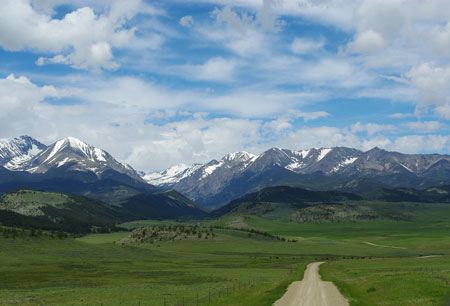Montana Medicaid Long Term Care Eligibility in 2023
Montana Long Term Care

1. Residency and Citizenship – the applicant must be a Montana resident and be a U.S. citizen or have proper immigration status.
2. Age/Disability – the applicant must be age 65 or older, or blind, or disabled. The applicant must meet certain medical requirements consistent with the level of care requested. Persons must need care for thirty (30) consecutive days.
3. Income Limitations – if single, the applicant’s income (wages, Social Security benefits, pensions, veteran’s benefits, annuities, SSI payments, IRAs, etc.) must be used completely to pay for long term care each month. If a married couple receives income from the same source then the community spouse is allowed to keep up to half of the total until the maximum described below (under the spousal rules section) is reached.
4. Asset Limitations (Exempt vs. Available) – Medicaid divides assets into two categories: Exempt and Available. Exempt assets are specifically designated under the rules, and ownership of an exempt asset by the applicant will not result in a denial of benefits. If an asset is not listed as exempt then it needs to be liquidated and applied toward the costs of nursing home care before the applicant can receive Medicaid benefits. The state has a look back period of 5 years with a penalty for people who sell assets below fair market price, transfer assets to others, or give money and property away. All non-exempt assets of both spouses are available as payment for long-term care expenses.
Exempt Assets for 2023 for an applicant in Montana include:
i. $2,000 or less in cash/non-exempt assets if single. If the assets exceed the limit on the first of the month the applicant is ineligible for the entire month.
ii. One home is exempt (equity limit $560,000) if planning to return. If a spouse, a child under 21, or a disabled dependent resides in it then there is no value limit.
iii. One car.
iv. Pre-paid funeral plans up to $1,500 or an irrevocable burial contract with a funeral home on a state approved form.
v. Life insurance policies for both spouses if the total face value for each is $1,500 or less.
vi. Personal effects and household goods.

vii. $6,000 of equity is exempt from income producing property if the property generates 6% of its worth at fair market value.
viii. Value of livestock is excluded; either as income producing or pets.
Spousal Rules in 2023:
Amount of assets community spouse may retain: The community spouse can keep non-exempt resources owned by one or both spouses worth a minimum of $29,724 and a maximum of $148,620. If the community spouse’s assets do not equal the minimum, the long-term care spouse is able to transfer assets until the minimum is reached.
Community spouse impoverishment protection: The community spouse can keep part of the institutionalized spouse’s income if the community spouse has an income of less than $2,289 per month. The maximum amount of monthly income a community spouse can keep is $3,715.50.
- There is a personal needs allowance of $50/month for the spouse receiving nursing home care. Veterans and surviving spouses of veterans who receive a $90 VA pension are able to keep the $90 plus original $50.
Montana long term care insurance partnership in 2023:
This is a program between the state and private insurance companies. Partnership policies protect assets by matching dollar for dollar what policy holders pay into their policies. For example, if you bought a Partnership Policy with a maximum benefit payout of $155,000 then you are able to protect $155,000 of your assets. For married couples each spouse needs to purchase their own policy. Once the $155,000 worth of long term care coverage is used, you may apply for Medicaid with $155,000 worth of assets exempted.

